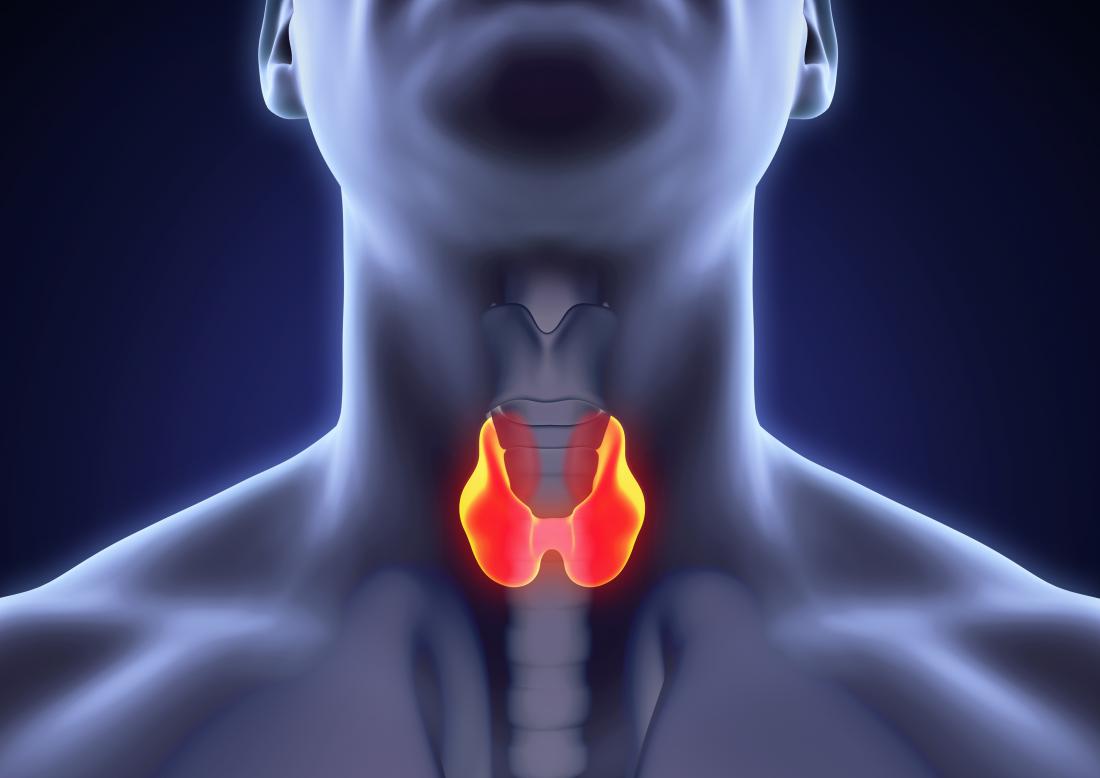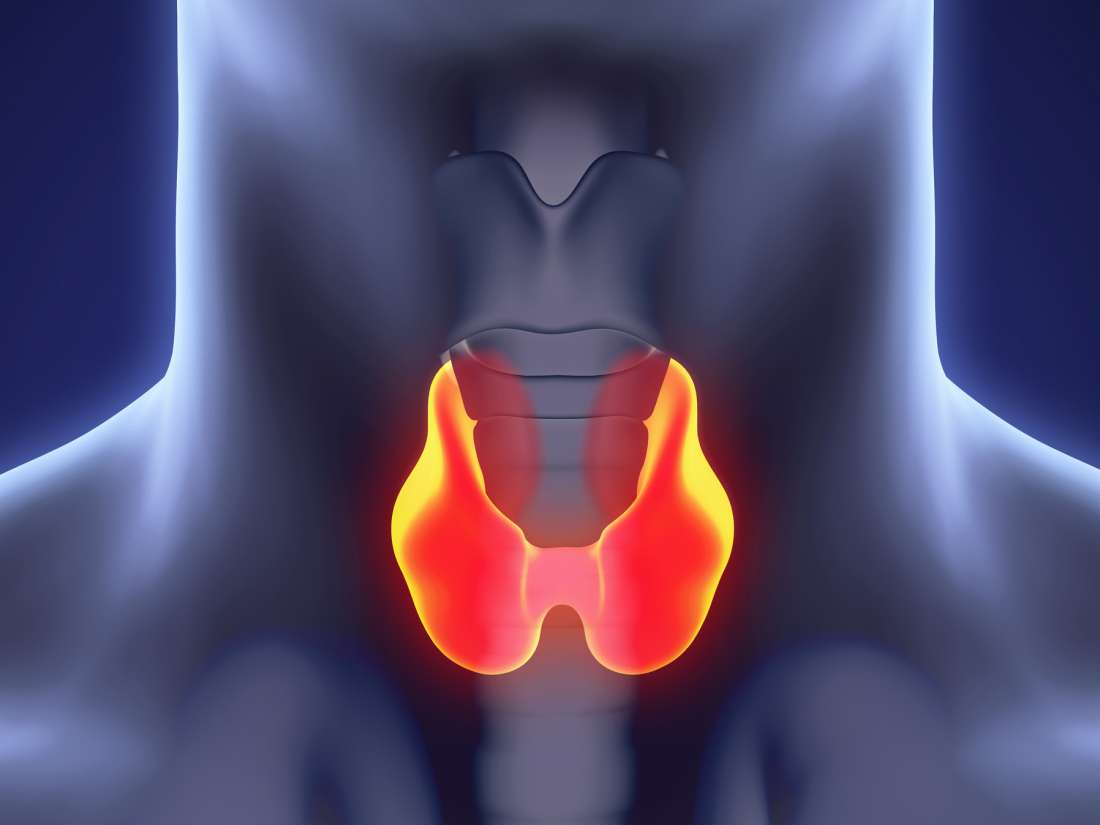In this article, we examine what medullary thyroid cancer or MTC is, and the early signs and common symptoms. We also cover when to see a doctor and the outlook for people with this condition.
What is MTC?

Medullary thyroid cancer may cause a lump to form in the neck.
The American Thyroid Association says that the disease is present in 1–2 percent of cancers of the thyroid in the United States. Elsewhere, a 2016 assessment put the prevalence of MTC at 3–5 percent of all thyroid cancers.
The thyroid is a butterfly-shaped gland located at the base of the neck, immediately below the Adam’s apple.
MTC starts in specialized thyroid cells known as parafollicular cells, or C cells. These C cells release a hormone called calcitonin, which controls the levels of calcium in a person’s blood.
Unlike other types of thyroid cancer, MTC can sometimes run in families. When a person inherits MTC from a parent, it is known as familial medullary thyroid cancer (FMTC).
Nevertheless, around 75 percent of MTC cases are sporadic, which mean that the individual with the condition did not inherit it from a parent.
Early signs
Because MTC tends to develop slowly, people in the early stages of the disease usually have no symptoms. For this reason, early diagnosis of MTC is not common.
When symptoms do appear, they typically consist of a painless lump in the front of a person’s neck or throat. This lump corresponds with the cancerous mass of cells that is growing inside the thyroid.
Common symptoms
- Common symptoms of MTC can include:
- swelling in the neck near the thyroid gland, which corresponds to enlarged lymph nodes
- cough, sometimes producing blood
- difficulty swallowing, sometimes causing pain
- shortness of breath
- difficulty breathing, because of a narrowing of the airways
If the condition progresses, symptoms may become more severe, and people can also experience other signs. These may include:
- a large mass in the neck
- pain in the neck, jaw, or ear
- choking sensations
People with cancer that has spread to the nerves that control the vocal cords may also experience hoarseness or changes in their voice.
In the advanced stages of MTC, high levels of calcitonin produced by the tumor can cause diarrhea and flushing.
When to see a doctor

A doctor should assess lumps in the neck.
Anyone who notices a persistent lump or swelling just below the Adam’s apple should see a doctor, especially if the symptoms coincide with any of the following signs:
- unexplained hoarseness that does not go away after a while
- difficulty swallowing
- a sore throat that does not get better
- pain in the neck
However, not all neck lumps are cancer. Many other less severe conditions can cause a lump in the neck, such as swollen lymph nodes.
If a doctor suspects that the lump may be cancer, they will usually refer the person to a specialist for further testing.
Outlook
MTC usually progresses slowly. It is also a very treatable condition if caught early. According to a 2017 review, the 10-year survival rate for MTC is:
- 95 percent if cancer is only in the thyroid gland
- 75 percent if cancer has spread to nearby lymph nodes in the neck
- 20 percent if cancer has spread to other parts of the body, such as the lungs, liver, and bones
Treatment typically involves surgical removal of the entire thyroid gland and any affected lymph nodes near the thyroid gland. Following surgery, a person usually needs to take medication to replace the hormones the thyroid used to produce.
Other treatment options for MTC include radiation therapy if there is a risk of it returning, and chemotherapy if cancer has spread.
